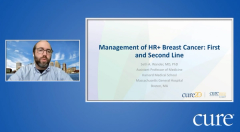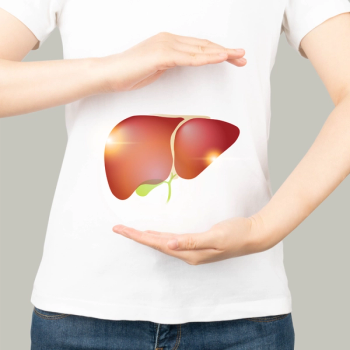
Educated Patient® Metastatic Breast Cancer Summit Addressing Unmet Needs Panel: November 12, 2022
Watch Dr. Leif Ellisen, Dr. Dejan Juric, Dr. Beverly Moy and Natasha Mmeje answer questions about unmet needs during the CURE Educated Patient Metastatic Breast Cancer Summit.
This panel was moderated by Dr. Leif Ellisen, program director and professor of medicine at Mass General Cancer Center, and included Dr. Dejan Juric, director of the Termeer Center for Targeted Therapies at Massachusetts General Hospital, Dr. Beverly Moy, associate professor of medicine at Harvard Medical School, and Natasha Mmeje, director of community health & outreach at Susan G. Komen.
Ellisen: So it looks like the first question is for Natasha. Natasha, can you talk about some of the efforts Susan G. Komen has implemented to address the disparities that Dr. Moy has talked about? And are there resources from Susan G. Komen you can recommend for our audience today?
Mmeje: Absolutely, I'd like to just first start off by saying thank you, Dr. Moy, for setting the stage so beautifully to talk about health disparities in this country and what it means around breast cancer. So Susan G. Komen in 2021, sent out a report called “Closing the Breast Cancer Gap, a Roadmap To Save Lives of Black Women in America,” which really exemplifies the points that Dr. Moy mentioned. And we focused on systemic and social determinants of health and, in particular, 10 metropolitan cities or areas that experienced the largest gaps in mortality rates between Black and White women. Dr. Moy talks about those staggering statistics. And according to that report, we found that Black women were often ignored by their health care providers, and they faced significant barriers to receiving the care that they needed due to the legacy of systemic racism that we've talked about earlier, as well as implicit bias and below standard care.
So in response to that, Komen has launched our “Stand For Her, a Health Equity Revolution,” which is a bold program that's set to decrease breast cancer disparities through very focused intervention that bring down barriers. The barriers that actually created these inequities in the first place for black people, some of those things include education that equips Black people with the knowledge about breast health, providing education on things like breast health assessment, screening guidelines and the importance of family health history, in their breast cancer risk, as well as treatment options and how to advocate for their own care. Also creating and amplifying conversations about these resources in the Black community through faith-based organizations through our worship and paint program. And then also supporting patients or patient support that ensures connections to timely health care and quality health care as well.
The other pieces of this are removing barriers to screening and diagnostic services, like Dr. Moy mentioned, for uninsured and underinsured individuals, easing financial burden for treatment for Black breast cancer patients, as well as increasing access to genetic counseling and testing services for Black families. We talked a bit about that as well today, serving as a trusted health care partner through our patient navigation program through Susan G. Komen. And then also for health care providers, workforce development that improves diversity and cultural sensitivity of those health care workers. I think that's very, very important. And then developing, trained Black patient navigators across the nation who will deliver best in class culturally responsive navigation services. Because the health care system can be very challenging to navigate, that patient navigator can really bridge that gap between health care providers and patients.
So those are the pieces that we're doing for the Black community to address health disparities and inequities. But I would also echo what Dr. Moy mentioned, which is, consider becoming an advocate in science, or a member of our steering committee or NBC steering committee, becoming an advocate with our Center for Public Policy. Dr. Moy mentioned that it's really important. And we see the change that when we go to advocate for bills that we need to get passed for breast cancer care, or whatever those health related issues are, they don't listen to us. They do listen to patients, and it is very important for patients to be in the room.
Ellisen: Thank you very much, Natasha. And there are a couple of questions for Dr. Juric and I'll put them together on the issue of beyond medical therapy. And one question is, when we think about METAvivor, as those surviving metastatic breast cancer, how can we integrate survivorship care into the state-of-the-art clinical trial and experimental approaches that you've discussed? And related to that, have you heard of Thomas Seyfried 's book on the metabolic basis of cancer and the keto diet and what would you say about those kinds of approaches in parallel with the sort of medical approaches that you've discussed?
Juric: Thank you so much for this question, it is really critically important. Actually, one of the patients bought me that book, when they heard that I'm studying Pi3 kinase inhibitors. It turns out that the Pi3 kinase pathway is important for insulin signaling. So when we're trying to attack the cancer using Pi3 kinase inhibitors, almost universally, we cause insulin resistance, which can have both negative metabolic effects and also drive potentially even resistance to therapy. So this is really fascinating. You're trying to interfere with the cancer cell. But at the same time, you're changing metabolic setup of a patient, which can negatively impact the treatment itself. And it turns out that keto diet in that context synergizes with the treatment itself, there's a beautiful paper by Luke Cantlie, that showed that of all the things that we can do to that cancer, giving the pediatric kinase inhibitor is really not sufficient unless we change that metabolic aspect as well. And the dietary intervention, plus the targeted therapy can have massive synergy. So absolutely, you can find better examples where this question would be more suitable than the story that I just told you about the PI3 kinase inhibitors. For that reason in the Termeer center, and National Cancer Center at large we started a whole program that's led by one of our nurse scientists, PhD trained nurses, called Point Program phase 1 outcomes research, where we are studying how taking care of patients’ symptoms, diet impacts, hardcore clinical trial outcomes that we usually wouldn't necessarily come to connect with. So paying attention to the well-being of a patient and managing many aspects of survivorship. I'm talking about DLP rates, really technical terms in a clinical trial that often we look in isolation. But this Point Program, and a nurse scientist driven research, we learn that actually, we can measure hope, we can see what how hope impacts outcomes in a clinical trial, we can see what interventions we are not offering patients. And what we should offer, we can stratify patients based on objective criteria, and engage the entire supportive services ecosystem that the hospital offers or their community to improve their outcomes. So I couldn't agree more this aspect of caring for a patient is really important. It's not sufficient just to look at the molecular features of disease, we have to look at the whole patient.
Ellisen: Thank you very much, doctor, your time is running short. But I'd like to ask you one more question for those in the audience today who might be living with metastatic breast cancer or their families and friends? Where would you suggest they go to learn about these clinical trials to learn about potential options for involvement in research and access to innovative care?
Juric: I apologize. Honestly, the number of resources out there is massive. And I think the priority, it's fascinating how much information you can actually get very good information from social media for various patient support groups where some of the first insights even on clinical trials are shared. You just have to be careful to take all the points of view and levels of evidence. But I think the critical aspect of caring for a patient or looking for these innovative therapies to improve the relationship between the patient and physician, I emphasize how important it is not to do things to the patient. This really has to be a partnership. The patient should ask why. As many times as possible, and get some sort of question, why the treatment didn't work, what can be done about it. And then together with the patient, look at the local availability of clinical trials, ask the physician to reach out to their colleagues to find options. So that should be really an active process, as opposed to thinking of kind of treatments as just the recipe that's implemented. Step by step, it is not that it's actually tapping in the dark often. And you need a lot of thought, a lot of humble inquiry as you move from one treatment to another, as opposed to just throwing darts in the wall. So I think, luckily, there are a lot of resources out there. But really to make those resources actionable, the relationship between a physician and patient has to be very active, full of questions and wise, not just what can we do next? Yes, this didn't work. But what can we do next? I think we need to learn a lot from aviation industry, where every failure is studied to the last detail to really try to prevent the next failure. We need to be as detailed in oncology as we are some of these other aspects of our life.
For more news on cancer updates, research and education, don’t forget to













